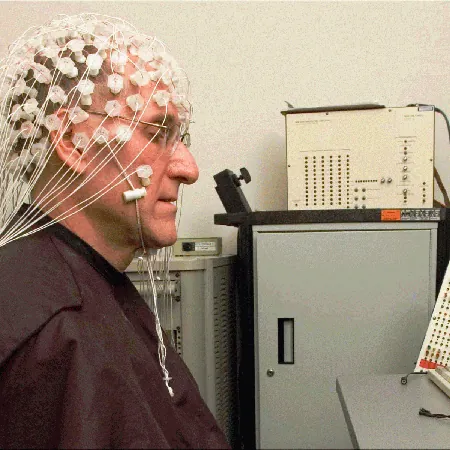
Unlocking the Secrets of Life: Researchers Develop Molecular Timers with Revolutionary Implications for Medicine
2024-12-19
Author: Jacques
Unlocking the Secrets of Life: Researchers Develop Molecular Timers with Revolutionary Implications for Medicine
In a groundbreaking discovery, a research team at the Université de Montréal, led by Prof. Alexis Vallée-Bélisle, has found a way to program biomolecules with remarkable precision, creating nanomachines capable of acting as molecular timers. The significance of this work could reshape our understanding of molecular communication and open unexplored avenues in medical nanotechnology.
The research, published in the Journal of the American Chemical Society, delves into the intricate mechanisms that allow living organisms to react to their environments over various timescales—effectively detecting light in milliseconds or responding to physiological signals like daily cycles and seasonal changes.
The scientists successfully replicated two fundamental mechanisms that affect how these biomolecular switches operate. Biomolecular switches, which are primarily composed of proteins and nucleic acids, execute essential functions such as catalyzing reactions, transporting molecules, maintaining energy storage, and facilitating growth and movement.
The Door Analogy
To explain their findings, Prof. Vallée-Bélisle usefully employs a door analogy. One can visualize a closed door as an inactive switch, while an open door signifies an active switch. The interaction between the switch and its activator—whether it’s light or a specific molecule—determines how the switch is activated.
He outlines two activation mechanisms: the induced-fit mechanism, where the activating molecule swiftly turns the door handle to open it, and the conformational selection mechanism, which allows the door to open spontaneously before the molecule can interact with it. This distinction plays a pivotal role in how various proteins and processes operate at different speeds—fast activation for immediate responses and slower activation for processes needing more regulated control.
Insights into Biomolecule Engineering
In an innovative approach, the research team crafted a simple DNA-based molecular 'door.' While DNA is renowned for encoding genetic information, its versatility as a programmable structure allows scientists to construct nanoscale devices. Incidentally, DNA serves as an excellent medium, akin to Lego blocks, enabling scientists to assemble their molecular designs effortlessly.
Experiments with a 5-nanometer-wide DNA door demonstrated that when activated through the induced-fit mechanism, the molecular switch could open and close a thousand times faster than the conformational selection mechanism. This remarkable speed differential offers powerful implications for drug delivery systems and other nanotechnology applications.
Revolutionizing Drug Delivery Systems
One of the most promising applications of this research lies in the field of nanomedicine. Programmable drug delivery systems utilizing these newly developed nanomachines could revolutionize patient treatment by controlling how and when drugs are released in the body. This advancement could minimize the frequency of drug administration and ensure sustained therapeutic levels over time.
The research team has already designed an antimalarial drug carrier capable of releasing medication at precise programmed rates. By incorporating molecular handles, fast and immediate releases can be achieved, while configurations without handles allow for slower, sustained releases.
Understanding Evolutionary Mechanisms
Moreover, this study sheds light on the evolutionary significance of these two mechanisms. For instance, proteins involved in rapid detection of stimuli, such as receptors for light or olfactory signals, likely evolved using the quick induced-fit method. Alternatively, mechanisms requiring prolonged interactions, like those seen in certain biological processes, may rely on the more measured conformational selection approach.
In summary, the work conducted by Vallée-Bélisle and his team not only enhances our grasp of molecular biology but also potentially charts the path for future advancements in nanotechnology and drug delivery systems. As researchers continue to explore these complex bioswitches, the implications for medicine could be unprecedented.









 Brasil (PT)
Brasil (PT)
 Canada (EN)
Canada (EN)
 Chile (ES)
Chile (ES)
 España (ES)
España (ES)
 France (FR)
France (FR)
 Hong Kong (EN)
Hong Kong (EN)
 Italia (IT)
Italia (IT)
 日本 (JA)
日本 (JA)
 Magyarország (HU)
Magyarország (HU)
 Norge (NO)
Norge (NO)
 Polska (PL)
Polska (PL)
 Schweiz (DE)
Schweiz (DE)
 Singapore (EN)
Singapore (EN)
 Sverige (SV)
Sverige (SV)
 Suomi (FI)
Suomi (FI)
 Türkiye (TR)
Türkiye (TR)